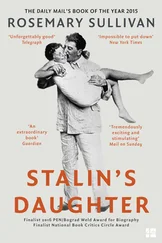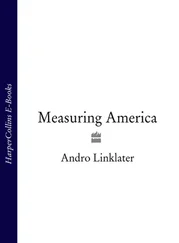The deep relationship with Miró, the change of allegiance, and the repeated pledges of loyalty to Spain’s interests must have made this final momentous transition seem like a small step. But by reporting to the Spanish governor in return for payment while he held the rank of brigadier general in the U.S. army, Wilkinson had crossed a Rubicon. He was no longer a private citizen, and his actions had moved beyond moral flexibility or political grandstanding. A soldier who aided a foreign power broke his military oath and was liable to court-martial. If it could be proved that he had attempted to suborn others from their loyalty to the United States, Wilkinson would face the death penalty for treason.
12
DISCIPLINE AND DECEIT
THE CREATION OF THE LEGION of the United States remains a high point of military innovation in the country’s history. This force was designed for the particular needs of fighting on the North American continent, but organized according to the most sophisticated European thinking on how best to use the three different arms of infantry, artillery, and cavalry. Henry Knox, bookseller, general, and secretary of war, was largely responsible for the concept, and in recommending the Legion to the president, he cited both classical authorities, such as the historian Polybius on the Roman legion, and eighteenth-century experts such as Marshal Maurice de Saxe, author of My Reveries on the Art of War . But George Washington, adamantly conservative on the shape of the army he wanted for fighting the British, turned Knox’s radical ideas into reality.
What made a disciplined army essential was not just the defense of settlers, but the implementation of the president’s ambitious policy toward Native Americans. From the Kentucky settlers’ point of view, Indian attacks required the sort of punishment inflicted by Wilkinson in 1791 that would clear the land of its original inhabitants. In Philadelphia, however, the president was determined to find a place for Native Americans within the Union, an approach warmly endorsed by Henry Knox.
“It is painful to consider that all the Indian Tribes once existing in those States, now the best cultivated and most populous, have become extinct,” Knox had written Washington in July 1789. “If the same causes continue, the same effects will happen, and in a Short period the Idea of an Indian on this side of the Mississippi will only be found in the page of the historian.” Knox proposed that “instead of exterminating a part of the human race by our modes of population,” the United States should impart “our Knowledge of cultivation, and the arts, to the Aboriginals of the Country by which the Source of future life and happiness [might be] preserved and extended.”
It would be difficult and expensive, he acknowledged. In the long term, the Indians would have to learn how to farm and to develop “a love for exclusive property,” and in the short term, the boundaries of their lands needed to be defined and protected from unscrupulous settlers. But the policy was cheap compared to war. To overawe the Indians and restrain the settlers, an army of at least five thousand would be needed.
Knox’s plan underpinned the administration’s first formal treaty, signed in August 1790 with Alexander McGillivray, the half-Scots leader of the Creeks. Later that year, in December, Washington gave a similar guarantee of inviolable boundaries and protection by the federal government to Cornplanter, the Seneca chief: “No State nor person can purchase your lands, unless at some public treaty held under the authority of the United States. The general Government will . . . protect you in all your just rights.”
This policy of inclusion was damaged in the south by Georgia’s hunger for Creek land, and destroyed in the north by New York and Pennsylvania’s program to expel the Six Nations from their rich lands below Lakes Ontario and Erie. The Northwest Territory, covering modern Ohio, Indiana, and Illinois, belonged to the federal government, however, and there Knox and Washington were determined to make their ideas a reality. In the long term, the chain of forts stretching north from the Ohio would keep both Indians and settlers pacified. In the short term, the Legion had to regain control of the area.
The Legion’s salient characteristic was the integration of guns, horses, rifles, and bayonets within a single unit. Traditionally, each was accustomed to train and act separately: the artillery found a strategic position and fired; the cavalry waited for a weakness, then charged; the riflemen sniped and scouted ahead of the infantry; and the infantry formed a line or column with the sole purpose of concentrating the impact of a volley and a charge regardless of what was happening around them.
Large armies fighting static battles could afford such specialization, but in the wilderness of North America, Native American warfare had demonstrated the superiority of small forces and rapid movement. According to Knox, the smallest feasible unit numbered exactly 1,280, excluding officers, and was made up of about 720 infantrymen and 400 riflemen, with the remainder divided between artillery and cavalry. The Legion of the United States consisted of four such self-contained, miniature armies, together with officers and staff. But for these sub-legions to be effective, each arm had to train both separately and in unison. From the moment he was appointed in April 1792, General Wayne’s goal was to prepare his soldiers to fight in this new way. It required longer training and more intense discipline than the old model. But intensity was Wayne’s dominant characteristic.
The high point of his service in the Revolutionary War was a savagely violent bayonet attack at night that he personally led on a British position at Stony Point, New York, in 1779. Reviewing his record, Washington noted that he was too impetuous, but decided it was a fault in the right direction, and at the end of the war approved his promotion to major general. By then his single-minded, almost autistic focus had earned him a telling nickname, Mad Anthony, and Jefferson’s note of the 1792 cabinet discussion about the general’s qualities pointed in the same direction. Wayne was thought to be “brave & nothing else,” with the danger he would “run his head ag[ains]t a wall where success was both impossible & useless.”
True to character, Wayne attacked the problem of creating virtually a new army from scratch as though it were an enemy position. All but a handful of the enlisted men came from New England and the middle states. They lived far from the territory they were to defend and lacked any obvious motive for hostility to Indians. Except for a large contingent of Connecticut farm-workers, most were town dwellers from Baltimore, Philadelphia, and New York, more than half were foreign-born, and almost 40 percent were illiterate. Although patriotism motivated some, and as many as one in five had served in the Revolutionary War, the majority enlisted to escape whatever civilian life had to offer—debts, prison, or boredom—and a large minority signed up because the recruiters made them drunk. Even with the threat of hanging if caught and a ten-dollar bounty for bringing back a deserter, the annual rate for desertion rarely dropped below 10 percent.
Wayne established a training camp for these new recruits at Fort Fayette outside Pittsburgh, but immediately encountered a new handicap. Almost one quarter of the army’s officers, those with experience who should have been the Legion’s instructors, had been killed in St. Clair’s defeat—a horrifying ratio equal to that of the bloodiest battles of the Civil War. To overcome the almost insuperable difficulties, Wayne instituted a regime of legendary severity.
“Every thing depends on discipline,” Knox had told him. “The public interest, the national Character and your personal reputation.” Wayne needed no encouragement. The guardroom and whipping were for minor offenses. Drunkenness, sleeping on guard duty, and desertion made a soldier liable to flogging with up to one hundred lashes, and one in ten of those found guilty of such offenses were condemned to death by hanging or firing squad. For drill he relied on the close-quarter maneuvers of Steuben’s Blue Book, but the training included marksmanship, maneuvers with cavalry and artillery, and incessant digging of entrenchments and fortifications. Whatever happened, they were never again to be surprised by a dawn attack.
Читать дальше












